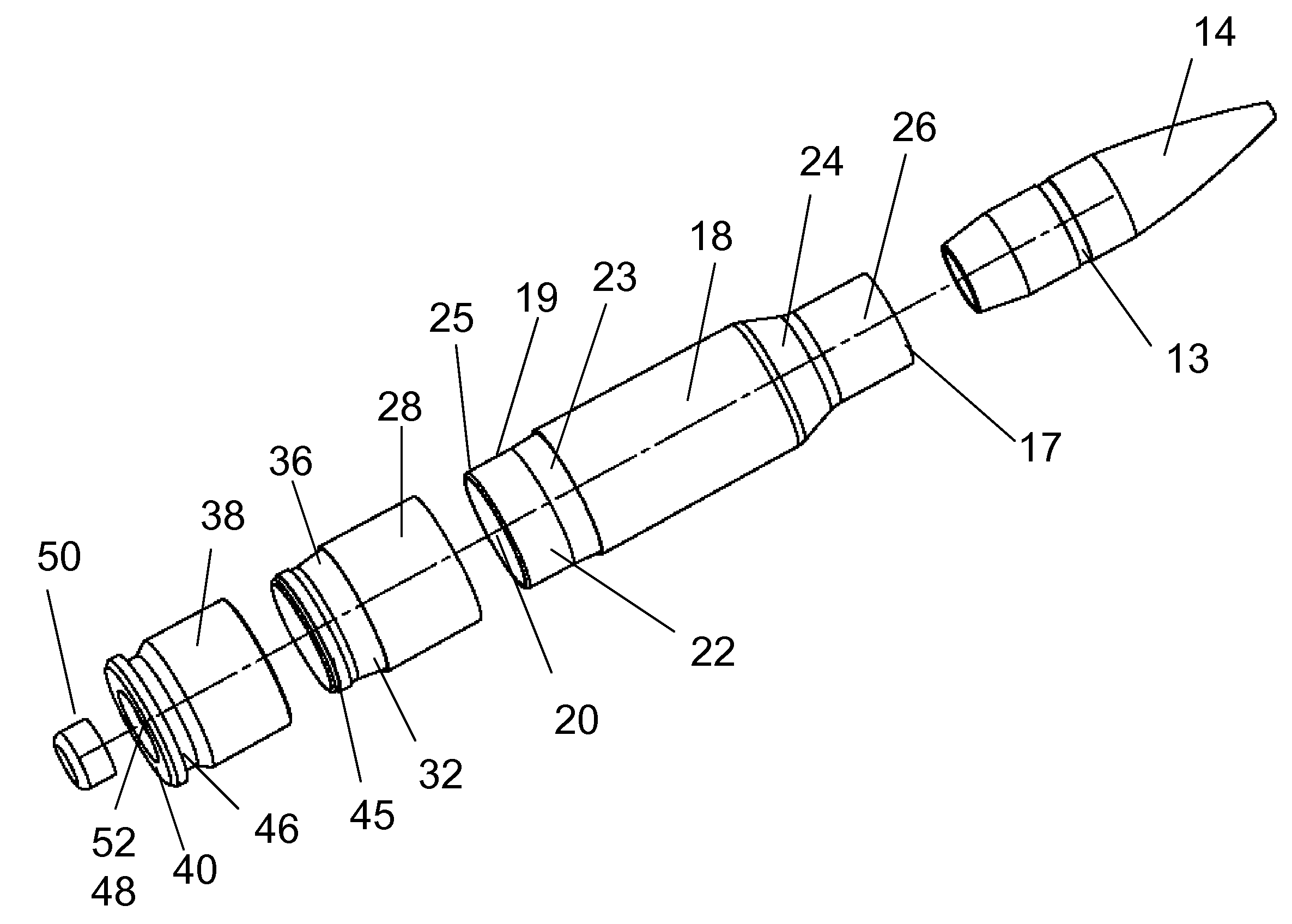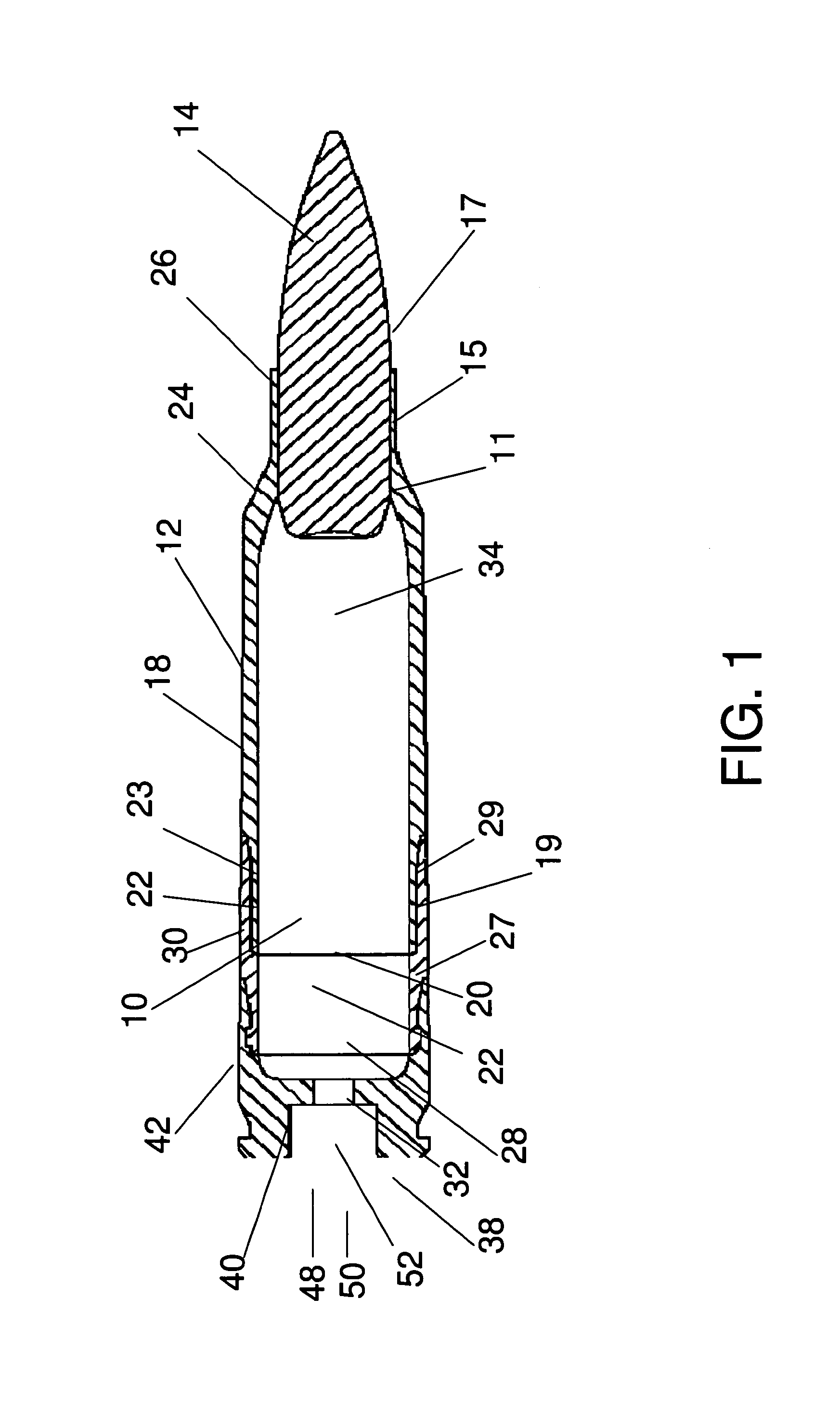Lightweight polymer cased ammunition
a polymer cased, light-weight technology, applied in the field of ammunition articles, can solve the problems of increased weight, fatigue, heat stress, injury, performance degradation of soldiers, and army's weapons and equipment is still too heavy to allow foot soldiers to maneuver safely under fire, and achieve the effect of saving weigh
- Summary
- Abstract
- Description
- Claims
- Application Information
AI Technical Summary
Benefits of technology
Problems solved by technology
Method used
Image
Examples
Embodiment Construction
[0069]Referring particularly to the drawings, wherein like figures indicate like parts, there is depicted in FIG. 1 a side, cross-sectional view of one embodiment of the present invention. An exploded view of the same embodiment is depicted in FIG. 3. A rifle cartridge 10 suitable for use with high velocity rifles is shown manufactured with a polymer casing 12 open at both ends with projectile 14 inserted into the forward end opening 16. Polymer casing 12 has a substantially cylindrical open-ended polymeric bullet-end component 18 extending from forward end opening 16 rearward to the opposite end 20. The bullet-end component 18 is injection molded with coupling element 22 formed on end 20. Coupling element 22 is shown in FIG. 1 as a male element, but may also be configured as a female element in alternate embodiments of the invention. The forward end of bullet-end component 18 has a shoulder 24 forming chamber neck 26. The bullet-end component typically has a wall thickness between ...
PUM
 Login to View More
Login to View More Abstract
Description
Claims
Application Information
 Login to View More
Login to View More - R&D
- Intellectual Property
- Life Sciences
- Materials
- Tech Scout
- Unparalleled Data Quality
- Higher Quality Content
- 60% Fewer Hallucinations
Browse by: Latest US Patents, China's latest patents, Technical Efficacy Thesaurus, Application Domain, Technology Topic, Popular Technical Reports.
© 2025 PatSnap. All rights reserved.Legal|Privacy policy|Modern Slavery Act Transparency Statement|Sitemap|About US| Contact US: help@patsnap.com



